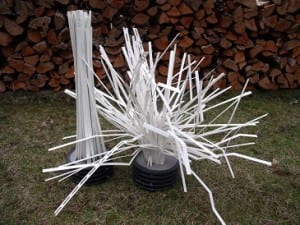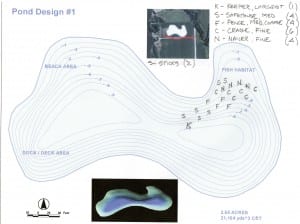Chapter #1
A force as big as all outdoors:
Meals: $165 Fishing license: $30 New boat and trailer: $52,000 ATV: $6,000
Motel: $69.95 x 5 nights Boat registration: $60 Hunting license: $50 Gas: $75
Two weeks’ groceries: $300 GPS and walkie-talkies: $295 Gas $115
Polarized sunglasses: $90 Fish finder: $360 Boat winterization: $300
New rod and reel: $295 Flowers for my wife for letting me go fishing: $45
New rifle: $785 Cabin: $25,000 Property tax: $4,200 Hunting land : $115,000
Chain saw: $189 Trolling motor: $280 New boots and coat: $325
Taxidermy (with any luck): $450
A dollar here . A hundred dollars there . It adds up to more than you might think.
America’s 34 million hunters and anglers are an economic powerhouse , driving the economy. They’re passionate about their pastimes and they spend passionately too.
Multiply individual spending by those many millions of people , and you’re talking a major force in our economy, through booms as well as recessions . They directly support 1.6 million jobs . They spend more than a billion dollars just on licenses, stamps , tags and permits, and they generate $25 bi l l ion a year in federal , state and local taxes .
By any measure , hunters and anglers are among the most prominent and influential of all demographic groups. Hunters and anglers support twice as many jobs as the combined civillian payrolls of the Army, Marine Corps , Navy and Ai r Force .
$208 million a day. $1.5 billion per week. Annually hunters and anglers spend $9 billion to lease and purchase land for their sports . That’s enough to purchase 27,000 new homes or rural acreage larger than the states of Rhode Island and Delaware combined.
No mortgage crunch here. Without hunters and anglers, our economy would be a lot smaller. $76 billion smaller, in fact. That’s how much they spend each year on their pass ion for the outdoors. If a single corporation grossed as much as hunters and anglers spend, it would be among America’s 20 largest , ahead of Target , Costco and AT&T. Buthunters’ and anglers ’ influence goes even further. They create an economic “ r ipple effect “. They keep people working: not just in typical hunting and fishing jobs , but also in ga s stations, retail , restaurants and hotels throughout every state and congressional district of the USA.
There are other numbers , too. For instance , Americans spend more time hunting and fishing each year than days spent running the Federal government (737 mi l l ion days vs . 486 mi l l ion) . Together, hunters and anglers are a significant voting bloc. In fact, their voting potential was 31% of all votes cast in the 2004 presidential election. Eighty percent of sportsmen are “likely voters,” far more than the national average. They can change the tide of elections. And, as you might guess, they tend to favor pro-sporting candidates.
$8.6 million an hour. Spending by hunters and anglers is more than the revenues of Microsoft , Google, eBay and Yahoo—combined (76 billion vs . 73.6 billion)
Higher earnings than high-tech. (34 MILLION VS . 27 MILLION ) More people hunt and fish than watch the nightly newscasts of the three major networks—ABC, CBS, and NBC. Breaking news. Hunting and fishing Americans out number motor- sport fans by more than 2 to 1. In fact , they could fill every NASCAR track 13 t imes over.
Racing ahead. If the $76 billion that sportsmen spend on hunting and fishing were the Gross Domestic Product of a country, sportsmen as a nation would rank 57 out of 181 countries .
On lodging alone, hunters spend more than the annual revenues of Comfort Inn, Comfort Suites, Quality Inn, EconoLodge, Rodeway Inn and Sleep Inn combined. Sleep on it.



